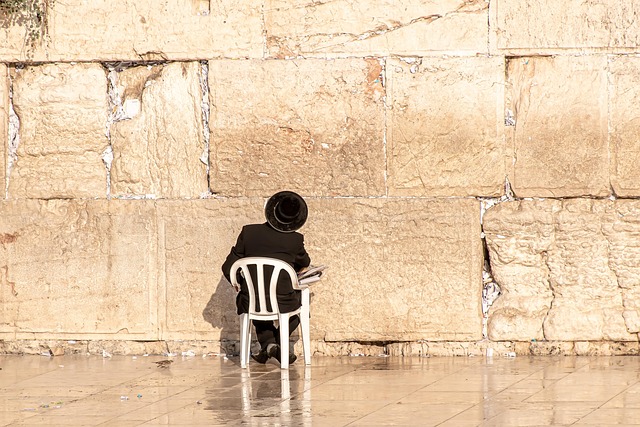Faith practice is often imagined as a solitary, introspective journey. In reality, it is deeply communal. The rhythms of prayer, study, and worship that shape individual believers also knit together the fabric of faith communities, creating bonds that are both resilient and transformative. By engaging in shared spiritual routines, people find meaning, support, and a sense of belonging that transcends personal experience. This article explores how common practices within religious traditions act as bridges, bringing diverse individuals together and strengthening the collective identity of faith communities.
The Role of Ritual in Religious Life
Rituals are the visible, structured expressions of a community’s beliefs. They provide a framework that transforms private devotion into a shared celebration. Whether it is the lighting of candles on a Sabbath, the recitation of a daily prayer, or the communal singing of hymns, these acts create a rhythm that members can recognize and anticipate. Rituals give language to abstract ideas—such as forgiveness, gratitude, or divine presence—making them accessible through repetition and communal participation.
- Consistency. Regular rituals offer a sense of stability in an unpredictable world.
- Identity. Each ritual carries symbols that help define who the community is.
- Connection. Performing the same rites simultaneously allows individuals to feel part of something larger than themselves.
Daily Prayer and Meditation
Many faith traditions encourage individuals to pray or meditate at specific times—morning, midday, evening, or before sleep. When believers share these moments, even quietly in their homes, they participate in a collective rhythm that reinforces communal values. In some cultures, families gather in the living room to say a short blessing before meals; in others, a group of friends might meet outside a place of worship for a brief, informal meditation.
“Prayer is not an act of asking; it is a practice of listening.” — Anonymous
Community Gatherings and Shared Worship
Weekly services, monthly festivals, and yearly pilgrimages are cornerstone events that bring faith communities together. These gatherings provide opportunities for collective praise, communal learning, and mutual support. The shared experience of worship can deepen individual conviction while simultaneously reinforcing the group’s shared mission.
Weekly Services and Festivals
Most religions schedule regular services that offer a structured time for collective devotion. In Christian churches, Sunday services include sermons, hymns, and communion. In Islam, Friday prayers (Jumu’ah) bring together congregants for a sermon followed by collective worship. In Judaism, Shabbat services at a synagogue serve as a weekly anchor, inviting families to gather, sing, and share blessings.
- Preparation: Members often prepare spiritually and materially—washing hands, wearing special clothing, bringing shared offerings.
- Participation: The act of standing, kneeling, or sitting in unison creates a visual and auditory unity.
- Reflection: Post-service discussions or study sessions allow members to explore the themes presented.
During festivals—such as Ramadan, Passover, or Diwali—the community expands its boundaries, inviting outsiders to experience rituals that foster intercultural understanding.
Personal Spiritual Practices and Communal Support
While faith practice often involves personal disciplines—fasting, scripture study, or solitary prayer—these activities are rarely undertaken in isolation. Many traditions provide structures that encourage believers to share insights, offer encouragement, and provide accountability.
Study Groups and Confession
Small study groups allow members to delve deeper into sacred texts while fostering a sense of camaraderie. The shared exploration of scripture encourages dialogue, allowing individuals to see how their personal experiences align with broader teachings.
“The sharing of scripture becomes a conversation with the Divine, enriched by the voices of others.” — Spiritual Leader
In many faith communities, confession or confessional practices serve as a communal safety net. Confession provides an avenue for individuals to acknowledge shortcomings and receive guidance from trusted mentors or peers. The act of confessing in a community context can reinforce collective responsibility and mutual care.
Traditions as Bridges Across Generations
Rituals often function as living archives, preserving the collective memory of a faith group. They connect older generations with younger ones, transmitting values, language, and practices in a tangible way. This intergenerational dialogue ensures continuity while allowing for adaptation to contemporary contexts.
Ritual Transmission and Collective Memory
During rites of passage—such as baptisms, bar/bat mitzvahs, or rites of initiation—families and communities come together to mark significant milestones. These ceremonies encode cultural narratives, teaching younger members the meanings behind their symbols.
- Storytelling: Elders recount the historical significance of symbols used in the ceremony.
- Participation: Younger members often perform roles—holding a veil, reciting a prayer—thereby internalizing the ritual.
- Reflection: After the event, families discuss how the experience aligns with their shared faith journey.
Such rituals not only affirm individual identity but also weave the fabric of a collective narrative that persists over generations.
Challenges and Opportunities in Modern Context
Modern life presents both obstacles and possibilities for faith practice within communities. The pace of change, technological advancements, and shifting cultural attitudes can fragment traditional practices or, conversely, enable new forms of communal engagement.
Digital Platforms and Virtual Congregations
In recent years, faith communities have increasingly turned to online platforms to host services, study groups, and prayer circles. Virtual gatherings allow participants to join from anywhere, transcending geographic boundaries.
- Accessibility: Those unable to attend physically can still participate in communal worship.
- Inclusivity: Virtual spaces can accommodate diverse needs—such as mobility assistance or language translation.
- Innovation: Digital tools enable creative expressions—live-streamed chants, interactive sermons, and collaborative hymn composition.
While digital engagement offers new avenues for connection, it also raises questions about authenticity, sensory experience, and the depth of interpersonal bonds. Balancing virtual and in-person participation is key to maintaining the vitality of faith communities.
Conclusion: Faith Practice as a Living Community
Faith practice is not merely a series of solitary acts; it is a communal tapestry woven through shared rituals, collective worship, and mutual support. These practices anchor individuals in a shared worldview, provide a framework for moral and spiritual growth, and reinforce the sense of belonging that is fundamental to human well‑being.
When people come together to pray, study, celebrate, or grieve, they create a space where faith becomes lived experience rather than abstract doctrine. This communal dimension of faith practice sustains religious traditions, fosters intergenerational continuity, and equips communities to navigate the complexities of the modern world.
Ultimately, the shared spiritual routines of faith communities demonstrate that while each person may walk a personal path, the journey is most meaningful when traveled together.




